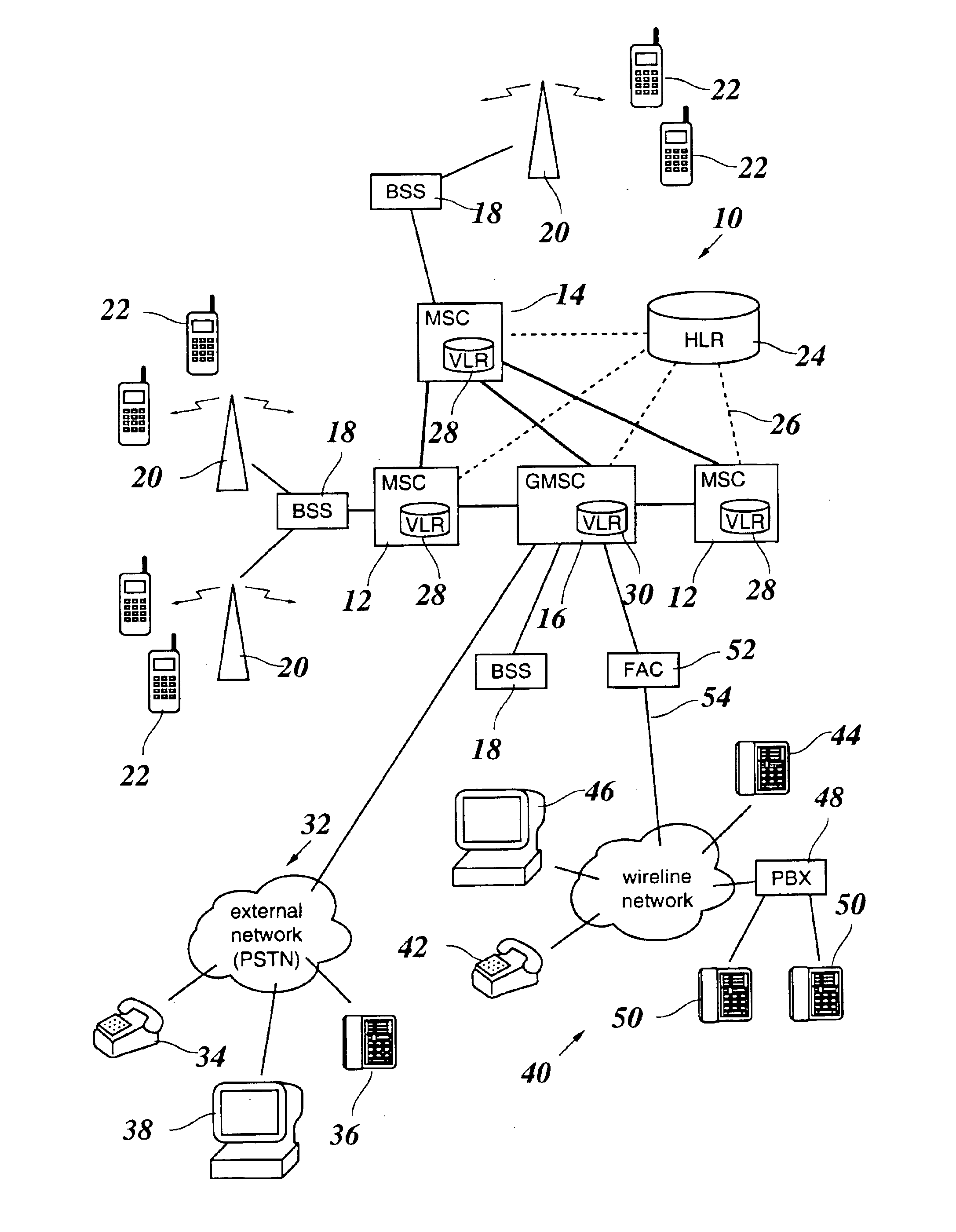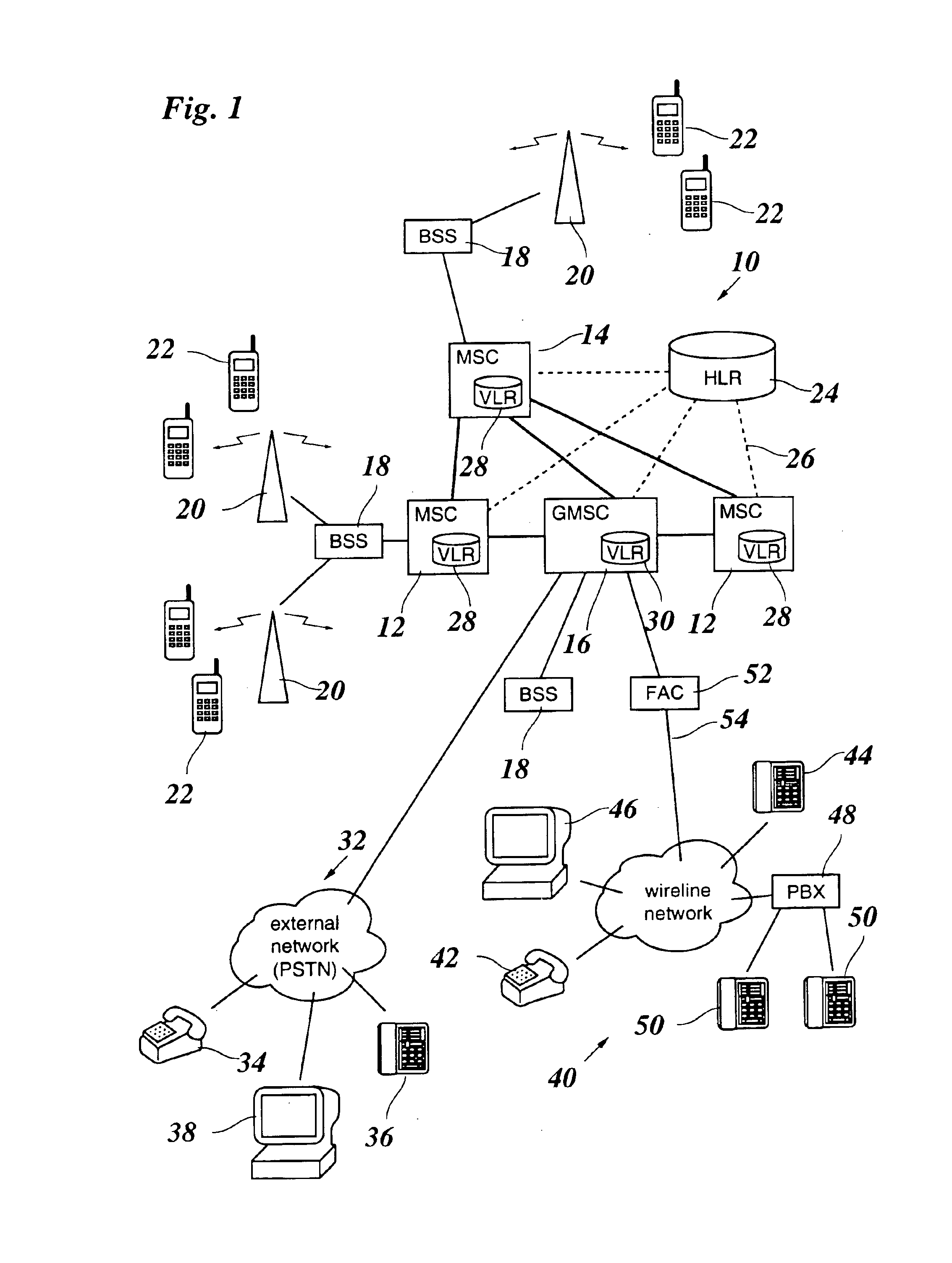Method and system for integrating fixed terminals in a mobile telecommunication network
a fixed terminal and mobile telecommunication technology, applied in the field of telecommunication system, can solve the problems of increasing costs, inconvenience of users having to cope with different sets of services, and subscribing to two different networks, so as to achieve convenient and consistent provisioning, and enhance the functionality of the mobile network
- Summary
- Abstract
- Description
- Claims
- Application Information
AI Technical Summary
Benefits of technology
Problems solved by technology
Method used
Image
Examples
Embodiment Construction
An embodiment of the invention will now be described, taking the European GSM system as an example for a mobile network, although the invention is not limited thereto.
FIG. 1 shows the mobile network 10 having a switched access node architecture. The access nodes are formed by Mobile Services Switching Centers (MSCs) 12 or a Gateway MSCs (GMSC) 16. The MSCs and GMSCs are fully interconnected, and each of them controls one or more Base Station Subsystems (BSS) 18. Each BSS controls one or more base stations or transceivers 20 communicating through an air link, i.e. through radio waves, with mobile terminals 22 that are present in their area of radio coverage.
Each of the MSCs 12 and GMSCs 16 is further connected to a Home Location Register (HLR) 24 through signal lines 26. Subscriber information for all the subscribers to the network 10 is stored in the form of a database in the HLR 24. The subscriber information includes an identifier, i.e. a so-called International Mobile Subscriber ...
PUM
 Login to View More
Login to View More Abstract
Description
Claims
Application Information
 Login to View More
Login to View More - R&D
- Intellectual Property
- Life Sciences
- Materials
- Tech Scout
- Unparalleled Data Quality
- Higher Quality Content
- 60% Fewer Hallucinations
Browse by: Latest US Patents, China's latest patents, Technical Efficacy Thesaurus, Application Domain, Technology Topic, Popular Technical Reports.
© 2025 PatSnap. All rights reserved.Legal|Privacy policy|Modern Slavery Act Transparency Statement|Sitemap|About US| Contact US: help@patsnap.com



